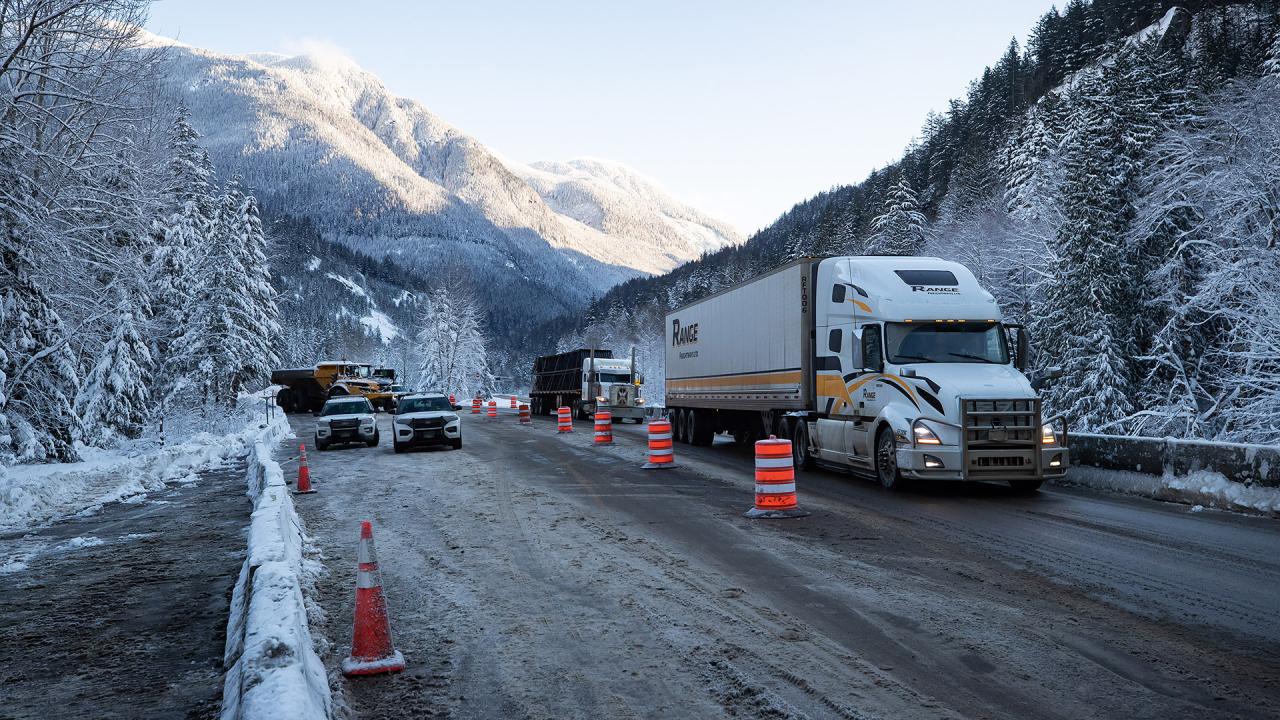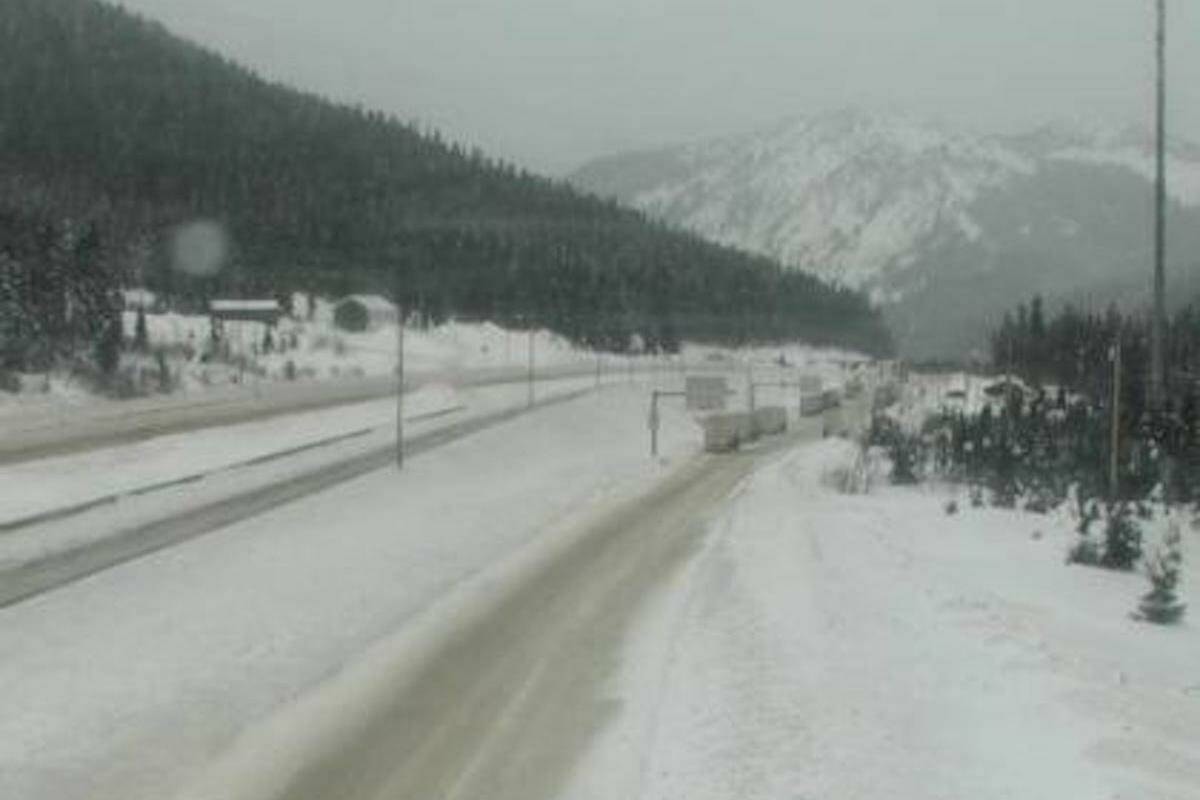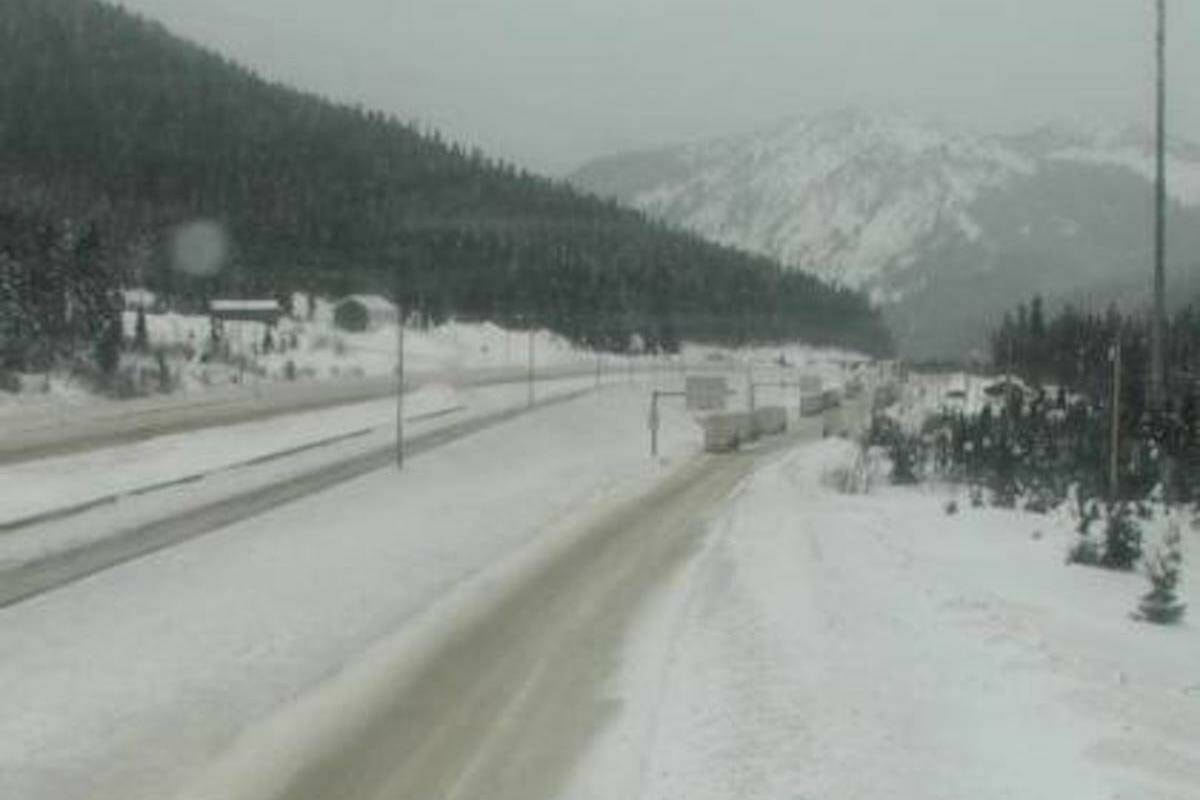Coquihalla weather camera feeds provide invaluable real-time insights into the conditions on this challenging mountain highway. Understanding the nuances of weather patterns along the Coquihalla is crucial for safe travel, and these cameras play a significant role in enhancing driver awareness and preparedness. This exploration delves into the utility of these cameras, their limitations, and how their data can be integrated for improved safety and traffic management.
From analyzing snow accumulation and ice patches to assessing visibility and identifying potential hazards, the information gleaned from these cameras is vital. We will examine the current network’s capabilities and explore potential improvements, ultimately aiming to highlight the critical role these technological tools play in ensuring safe and efficient travel on the Coquihalla Highway.
Coquihalla Highway Weather Conditions
The Coquihalla Highway, a vital transportation artery in British Columbia, Canada, experiences diverse and often challenging weather conditions throughout the year. Its mountainous terrain and high elevation contribute to significant variations in temperature, precipitation, and visibility, impacting road safety and travel times. Understanding these weather patterns is crucial for safe travel planning and effective road management.
Typical Weather Patterns on the Coquihalla Highway
The Coquihalla Highway’s weather is largely influenced by its elevation, ranging from approximately 300 meters to over 1200 meters. Summers are generally warm and dry, although afternoon thunderstorms can occur, particularly in higher elevations. Winters, however, are severe, characterized by heavy snowfall, freezing rain, and strong winds. Spring and autumn bring transitional weather patterns, with fluctuating temperatures and potential for both rain and snow.
Impact of Elevation Changes on Weather Conditions
Elevation plays a significant role in determining weather conditions along the highway. Higher elevations experience colder temperatures, increased snowfall, and a greater likelihood of icy conditions. Lower elevations may experience milder temperatures and more rain, especially during the transitional seasons. These elevation-related variations can create microclimates along the highway, leading to sudden and dramatic shifts in weather conditions over short distances.
Comparison of Weather Conditions on Different Sections of the Coquihalla Highway
The Coquihalla Highway can be broadly divided into sections based on elevation and geographic features. The lower sections, closer to Hope and Kamloops, tend to experience milder weather compared to the higher elevations near the summit. The summit area frequently experiences the most severe winter conditions, including significant snowfall, ice accumulation, and strong winds. The northern and southern approaches also exhibit different weather patterns due to variations in topography and prevailing wind directions.
Potential Hazards Posed by Various Weather Events
Several weather events pose significant hazards on the Coquihalla Highway. Heavy snowfall can lead to road closures and dangerous driving conditions. Freezing rain creates extremely slippery surfaces, while strong winds can reduce visibility and make driving challenging. Fog, especially in valleys, can severely impair visibility, increasing the risk of accidents. Avalanches are also a potential concern in higher elevation areas during periods of heavy snowfall.
Average Monthly Temperatures and Precipitation
| Month | Location (Example) | Temperature (°C) | Precipitation (mm) |
|---|---|---|---|
| January | Summit | -5 | 150 |
| April | Hope | 5 | 100 |
| July | Kamloops | 20 | 20 |
| October | Summit | 2 | 120 |
Coquihalla Weather Camera Locations and Coverage
A network of weather cameras provides real-time visual information about conditions on the Coquihalla Highway. Understanding their locations, coverage, and limitations is essential for interpreting the data and making informed travel decisions.
Locations of Existing Weather Cameras
Currently, weather cameras are strategically positioned at various points along the Coquihalla Highway. Specific locations vary depending on the provider and the overall network design. However, cameras are typically located at key elevation points, near major interchanges, and in areas known for challenging weather conditions. Information regarding precise locations is often available through transportation authorities and weather reporting websites.
Geographical Coverage and Viewing Angles
Each camera offers a specific geographical coverage area. The viewing angles vary, with some cameras providing a wide panoramic view, while others focus on a narrower section of the highway. The combination of camera locations and viewing angles aims to provide comprehensive coverage of the most critical areas along the route.
Limitations of the Current Camera Network

Despite the benefits, the current network has limitations. Coverage may be insufficient in certain areas, especially in remote sections or those prone to frequent weather changes. Visibility can be affected by adverse weather conditions such as heavy snow or fog, obscuring the camera’s view. Camera malfunction or maintenance issues can also temporarily disrupt data availability.
Design of an Improved Network of Weather Cameras
An improved network could address current limitations by strategically adding cameras to areas with limited coverage, focusing on high-risk sections, and incorporating higher-resolution cameras with improved low-light capabilities. Utilizing multiple cameras at key locations, with overlapping viewing angles, would enhance redundancy and improve overall coverage.
Interpreting Coquihalla Weather Camera Images
Effectively interpreting weather camera images requires understanding visual cues and recognizing patterns associated with various weather conditions. This skill enhances safe driving decisions and contributes to improved road safety.
Interpreting Visual Cues to Assess Road Conditions, Coquihalla weather camera
Visual cues such as snow accumulation, ice patches, and reduced visibility are readily apparent in camera images. The intensity of the color, the amount of snow cover, and the presence of slick surfaces are important indicators of road conditions. Understanding these cues helps drivers assess the severity of the conditions and make informed decisions about travel.
Examples of How Different Weather Conditions Appear in Camera Images
- Heavy Snowfall: The image will show significant snow accumulation on the road surface, reduced visibility, and possibly vehicles moving slowly or stopped.
- Freezing Rain: The road surface may appear dark and glossy, indicating the presence of ice. Visibility might be relatively good, but the extreme slipperiness poses a significant hazard.
- Fog: The image will show significantly reduced visibility, with a hazy or milky appearance. Distant objects will be obscured.
- High Winds: While not directly visible on the road surface, high winds might be indicated by blowing snow or debris, and possibly swaying trees or signs in the background.
Techniques for Identifying Potential Hazards Based on Image Analysis
Analyzing multiple consecutive images can reveal changes in road conditions over time, indicating the rate of snowfall or ice accumulation. Comparing images from different cameras along the route helps to assess the extent and severity of the weather event. Unusual activity in the image, such as stopped vehicles or emergency vehicles, may signal a potential hazard.
Limitations of Relying Solely on Camera Images
Camera images provide a visual snapshot of conditions at a specific point in time and location. They may not accurately reflect conditions along the entire highway, especially over longer distances. Weather conditions can change rapidly, so reliance on a single image may not provide a complete picture of current conditions. It’s crucial to supplement camera images with other sources of information.
Visual Guide to Interpreting Key Visual Elements

- Snow Accumulation: A thick, white layer covering the road indicates substantial snow accumulation. The depth and texture of the snow can be assessed visually.
- Ice Patches: Dark, glossy patches on the road surface suggest the presence of ice. These patches can be difficult to detect visually, particularly in low-light conditions.
- Visibility: The clarity of objects in the background indicates visibility. A hazy or milky appearance suggests reduced visibility due to fog or snow.
- Traffic Flow: The density and speed of vehicles in the image reflect traffic flow. Slow-moving or stopped vehicles can indicate hazardous conditions.
Integration of Coquihalla Weather Camera Data
Integrating weather camera data with other information sources enhances its usefulness, improving driver safety and providing more comprehensive situational awareness.
Integration with Other Information Sources
Weather camera data can be effectively integrated with weather forecasts, road reports, and traffic information systems. Combining visual information with predicted weather patterns and real-time road conditions provides a more complete understanding of the current situation. This integrated data can then be used to improve travel planning and decision-making.
Benefits of Integration into Navigation Apps and Driver Information Systems
Integrating weather camera data into navigation apps allows drivers to visualize road conditions in real-time, enabling them to choose alternative routes or adjust their travel plans accordingly. Driver information systems can use this data to provide real-time alerts and warnings about hazardous conditions, enhancing driver safety.
Challenges Involved in Data Integration
Challenges include data standardization, real-time data transmission, and ensuring data accuracy and reliability. Different data sources may use varying formats and protocols, making integration complex. Maintaining data accuracy and consistency is crucial for effective decision-making.
Monitoring the Coquihalla Highway’s weather conditions is crucial for safe travel, often relying on dedicated weather cameras. The recent incident involving a drone, as reported in the news about the nj drone shot down , highlights the importance of responsible airspace management. This underscores the need for clear regulations, especially given the increasing use of technology like weather cameras and drones near critical infrastructure like the Coquihalla.
Improving Driver Safety and Decision-Making
Real-time weather camera data, integrated with other information sources, can significantly improve driver safety and decision-making. Drivers can make more informed choices about their routes, speeds, and travel times, reducing the risk of accidents and delays. This integrated approach helps drivers navigate challenging weather conditions more safely and efficiently.
Monitoring the Coquihalla Highway’s weather conditions is crucial for safe travel, and the existing weather cameras provide a valuable service. However, for a more comprehensive view, especially in challenging terrain, the use of technology like a drone with camera could offer significant advantages, providing real-time, high-resolution images of road conditions. This supplementary data could greatly enhance the existing Coquihalla weather camera network, leading to improved safety and travel planning.
Potential Applications for Integrated Coquihalla Weather Camera Data
- Real-time road condition alerts: Providing immediate warnings about hazardous conditions such as heavy snow or ice.
- Route optimization: Suggesting alternative routes based on current road conditions and weather forecasts.
- Travel time prediction: Estimating travel times based on current traffic flow and weather conditions.
- Automated incident detection: Identifying potential incidents such as accidents or stalled vehicles based on changes in traffic flow and visual cues.
Impact of Weather on Coquihalla Highway Traffic
Weather significantly impacts traffic flow, travel times, and safety on the Coquihalla Highway. Understanding this relationship is essential for effective traffic management and mitigation strategies.
Effects of Different Weather Conditions on Traffic Flow and Travel Times
Heavy snowfall, freezing rain, and fog can dramatically reduce traffic flow and significantly increase travel times. Strong winds can also create hazardous conditions, affecting vehicle stability and visibility. These weather events often lead to road closures or speed restrictions, further impacting traffic flow.
Frequency and Severity of Weather-Related Traffic Incidents

The frequency and severity of weather-related traffic incidents vary depending on the season and the intensity of the weather event. Winter months typically see a higher frequency of incidents due to increased snowfall and icy conditions. Severe weather events can result in major accidents and widespread traffic disruptions.
Economic Impact of Weather-Related Disruptions
Weather-related disruptions on the Coquihalla Highway have significant economic consequences. Road closures and delays impact the transportation of goods and services, leading to increased costs and potential losses for businesses. Tourism is also affected, with cancellations and disruptions to travel plans.
Strategies for Mitigating the Impact of Weather on Highway Traffic
Strategies for mitigating the impact of weather include improved weather forecasting and monitoring, enhanced road maintenance and snow clearing operations, and the implementation of advanced traffic management systems. Public awareness campaigns and driver education programs can also contribute to improved safety.
Visual Representation of the Relationship Between Weather Conditions and Traffic Flow
- Clear Conditions: Smooth traffic flow, minimal delays, and high vehicle speeds.
- Light Snow/Rain: Slightly reduced traffic flow, minor delays, and moderate vehicle speeds.
- Heavy Snow/Ice: Significant reduction in traffic flow, major delays, reduced vehicle speeds, and potential road closures.
- Severe Weather (e.g., blizzard): Complete road closures, significant traffic disruptions, and potential for stranded vehicles.
The Coquihalla weather cameras offer a crucial layer of safety and information for drivers navigating this challenging route. While limitations exist in coverage and interpretation, the integration of camera data with other sources like weather forecasts and road reports significantly enhances situational awareness. Continued development and strategic placement of cameras, alongside improvements in data integration and analysis, will further enhance safety and efficiency on the Coquihalla Highway, benefiting both drivers and the broader transportation network.
Commonly Asked Questions: Coquihalla Weather Camera
How often are the Coquihalla weather camera images updated?
Update frequency varies depending on the specific camera and system; however, many aim for updates every few minutes.
Are the Coquihalla weather cameras operational 24/7?
Generally, yes, but occasional outages due to technical issues or extreme weather are possible.
Can I access the Coquihalla weather camera feeds on my mobile device?
Many feeds are accessible via web browsers on mobile devices. Check the relevant transportation authority’s website for links.
What should I do if I see hazardous conditions on a Coquihalla weather camera?
Exercise caution, reduce speed, and adjust your driving accordingly. Consider delaying your trip if conditions are severe.
